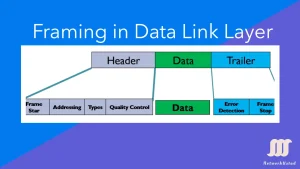Framing in Data Link Layer – Exclusive Explanation (Updated 2025)
Data-link layer framing is a critical process in networking, enabling reliable data transmission across diverse media. The data-link layer takes packets from the Network Layer and encapsulates them into frames, the fundamental data units for network communication. If the frame size becomes too large, the packet may be divided into smaller frames to ensure efficient […]

